The impression we are all given by our esteemed leaders and the mainstream media (MSM) that so compliantly serves them, is that the Islamist extremists represent an existential threat to our ‘way of life.’ The Islamists hate us and, most importantly, ‘hate our freedom.’ From time to time, depending upon the geopolitical realities of the day, we are reminded that the threat level is severe and asked to be vigilant, prepared to ‘run, hide, tell’ if ever we witness masked men with guns, though presumably they may well be police officers but it’s probably best to be terrified in any event.
The slight problem I have with all this is that the Western military industrial intelligence complex has been working with, arming, equipping, training and deploying Islamist extremist terrorist organisations for at least half a century. So, while their is no doubt that groups like ISIS, al Qaeda and Jaish al Islam (who work for out allies the Saudis) are murderous thugs, it’s not entirely clear who they work for or whose purpose they serve at any given moment.
Prior to the Soviet invasion of Afghanistan, in 1979, President Carter’s National Security Advisor, Zbigniew Brzezinski was the key architect of a plan to arm the Afghan Mujaheddin in what would later be known as ‘Operation Cyclone.’ Brzezinski aim was to bog the Russian forces down in an energy and resource sapping war in Afghanistan. He believed that arming the Afghan tribesmen presented an opportunity for the U.S to give Russia its own Vietnam. He saw the Islamists of the Mujaheddin as a useful tool to be wielded in support of U.S geopolitical objectives. In 1979 he flew to the Pakistan border with Afghanistan and told the gathered Mujaheddin:
“We know of your [their] deep belief in God and we are confident that your [their] struggle will succeed. That land over there [Afghanistan] is yours. You’ll go back to it one day because your fight will prevail and you’ll have your homes and your Mosques back again, because your cause is right and God is on your side.”
Thus began the modern era of cooperation between the Western powers, predominantly the U.S and the UK, and various Islamist extremist groups that has continued to this day.
While Operation Cyclone is widely acknowledged, any suggestion that Western powers continued their strategic support for Islamists groups, beyond the 1989 withdrawal of the Soviets from Afghanistan, is strictly taboo. We are instead asked to accept the simple narrative that the ‘war on terror’ is essentially a battle of good vs evil. The goodies are us, along with the factions we arm to the teeth, so they can fight for ‘democracy;’ the baddies are everyone who opposes them, who are also heavily armed, usually by either Russia or Iran apparently.
There is considerable evidence the Western power’s have continued to use Islamist terrorists as proxies in a game of geostrategic manipulation, inspired by globalist thinkers like Brzezinski, financed by the global corporations and the governments they control. Currently, this is most notable in Syria. However, we can trace the post-Cyclone relationship back to the early 1990s. Essentially, following the end of the Mujaheddin’s conflict with the Russians, the West’s relationship with Islamists never ended.

In 1991 both Croatia and Slovenia seceded from Yugoslavia, shortly followed by a declaration of independence by Bosnia-Herzegovina. Slobadan Milosevic’s Serbian government supported the Bosnian Serb’s rejection of the declaration and violence erupted between Bosnian Serbs and Muslims. Sadly, having previously coexisted in relative harmony, this bitter conflict literally pitted neighbours against each other. The violence was appalling and exacerbated when the Croats switched allegiance from the Serbs to the Bosnian Muslims.
Bosnia-Herzegovina devolved into three separate regions. One Muslim Bosniak, another Croat and the other Serbian. During the Bosnian War the Bosnian Muslim were supported by the U.S. and the UK (and earlier Iran and Saudi Arabia), the Croats drew Catholic support from across Europe and the Russians, Israelis, Greeks and Ukrainians supported the Serbs, again drawing fighters from a number of eastern orthodox nations. Effectively, during this period, the Bosnian War, the war in Kosovo, The Albanian civil war and the insurgencies in the Presevo Valley and the Republic of Macedonia were all heavily influenced by more powerful, external ‘players’. They all exercised their realpolitik through the sponsorship of various military factions.
In 1996 the Dutch Government commissioned a report from the Netherlands Institute for War Documentation (NIOD) into the events surrounding the Bosnian War and, in particular, the massacre at Srebrenica. Their published 2002 report was a product of investigators unrestricted access to Dutch intelligence and high level access to other intelligence service’s personnel and documentation. Their finding were extensive and unequivocal. It demonstrated the supposed U.N Security Council arms embargo was essentially a publicity stunt designed to give the impression that governments were trying to stop the killing. In reality, they were orchestrating it.
The word ‘government’ is used advisedly here. There is a difference between what most of us understand ‘government’ to mean and the nexus of unelected private interests who wield power over and above nation states. This is often collectively referred to as the New World Order (NWO.) This is itself slightly misleading but, suffice to say, ‘government’ here means those who control it, not those who are elected to represent it.
The Dutch report clarified that the CIA and MI6 were aware of the Iranian supply of arms and fighters to support the Bosnian Muslim Army. Rather than attempt to stop it, in 1993, they took it over and expanded ‘the Croatian Pipeline.’ It required the shipment of weapons, fighters and equipment via Turkey and Croatia into the war zone. The Dutch report stated:
“Clinton and State Department officials considered supplies via Saudi Arabia, Turkey and Pakistan. This was not new: in the 1980s, Saudi Arabia had already supplied arms worth $500 million via the CIA to the Mujahedin fighters in Afghanistan. There had also already been a close relationship with Turkey in the area of intelligence for some considerable time. For instance, there were various American monitoring stations in Turkey, and there was close collaboration of the Turkish domestic security service with the CIA and the FBI.”
Previously, in 1992, a 14 man CIA backed team, consisting of ‘retired’ U.S. military personnel, entered Bosnia through Croatia and set up a training camp in Meskovic, a village near the town of Tuzla. CIA support for the Bosnian Islamists came through the ‘Croatian pipeline.’ Arms bought in Iran and Turkey, with Saudi ‘front’ money, were dropped by blacked out Hercules C-130s to the waiting forces below. The Dutch governmental report into the breach of the U.N embargo stated that Islamist fighters also entered the conflict through this route.
Building upon their extensive relationships with Islamist extremists, the Western governments saw the Bosnian War as an ideal opportunity, one they had effectively created, to continue the strategy of tension in Europe and move the most extreme Islamist elements towards a global presence.
Thousands of Arab fighters, including future al Qaeda terrorists, were sent through the Croatian Pipeline into the conflict. Once there, U.S. and British Special forces, such as the SAS and SBS, covertly trained them in advanced combat techniques, the use of explosives, surveillance and so on. The most radical Islamists then acted as Muslim Bosniak special forces or ‘shock troops.’ They were deployed in extremely high risk operations in no small measure due to their enthusiasm to commit atrocities and die for the cause.
Ayman Al Zawahiri (then second in command of al Qaeda) sent his brother, Muhammed al Zawahiri, into the Bosnian conflict in 1993 as a charity representative for the International Islamic Relief Organisation of Saudi Arabia (IIROSA). Once inserted, he remained in the region and helped to coordinate his end of the Croatian Pipeline and other operations.
The flood of Islamist fighters and arms into the conflict led to the massacre at Srebrenica in 1995. Bosnian Serb forces systematically executed thousands of Muslim males, including children. While there is no possible justification for the appalling slaughter, the context is consistently overlooked. Prior to the Srebrenica massacre thousands of Serbs were tortured and killed by Islamist extremist of the Bosnian Mujahideen in the outlying vicinity. The hatred reached incalculable levels as humankind once again revealed its capacity for insane violence. General Philippe Morillon, commander of the UN troops in Bosnia, testified to the ICTY (International Criminal Tribunal for the former Yugoslavia) that Muslim forces based in Srebrenica had:
“……engaged in attacks during Orthodox holidays and destroyed villages, massacring all the inhabitants. This created a degree of hatred that was quite extraordinary in the region”
In response, NATO supported Operation Storm. Croatian forces launched a major offensive and NATO provided air support ultimately forcing the Bosnian Serbs out of the war and the signing of the Dayton Accords, negotiated at Dayton Air Force Base, Ohio. Operation Storm was supported by Richard Perle (former Chairman of the Council for Foreign Relations & Trilateral Commission) who bought in the services of private military contractors called ‘Military Professional Resources Incorporated’ (MPRI – essentially a mercenary corporation) to train and equip the Croat forces for Operation Storm. It became immediately apparent the combination of MPRI’s activities and the ‘Train and Equip’ program, far from stabilising the post-war region, was actually reigniting tensions between the Serbs and the Muslims.
This led to the outbreak of another atrocious conflict in the Serbian province of Kosovo in 1996. Although Kosovo was predominantly ethnically Albanian, the ranks of the main Western backed protagonists were again swelled by the Bosnian Mujaheddin, replete with its fledgling al Qaeda ‘brigades.’
The Kosovo Liberation Army (KLA) was effectively a client of MPRI. Its commander was Agim Ceku, a former brigadier general in the Croatian army, who had worked with the MPRI leader, ‘retired’ U.S. Major General Walter Yates, during Operation Storm. In 1999, millions of dollars worth of arms were transferred from Bosnian weapons dumps to the KLA. This caused a bit of embarrassment on Capitol Hill as the KLA had been described in 1998, by U.S. Balkan envoy Robert Gelbard, as “without any questions, a terrorist group.” However, he soon backtracked and said they weren’t. Consequently, the Train and Equip program was suspended, and they weren’t able to officially restart it until the heat had died down a bit.
The KLA initially formed as an amalgamation of radicalised students, professionals, members of influential families and the local Mafia. They embarked upon their brutal campaign by bombing Serbian refugee camps and their methods deteriorated from there. They frequently targeted Serb and Albanian civilians who they decided were ‘collaborators.’ However, their numbers were significantly increased by the influx of mujahideen fighters in 1998.
In 1994 Osama bin Laden began establishing training camps in Albania, probably by using his official issue Bosnian passport. A 1998 joint CIA and Albanian intelligence report stated:[24]
“Mujahideen units from at least half a dozen Middle East countries streaming across the border into Kosovo from safe bases in Albania.”
Many of the KLA fighters had also trained in al Qaeda camps in Afghanistan, according to the testimony of senior Interpol official Ralf Mutschke, who gave evidence to the US Congress. Mutschke stated that bin Laden’s right-hand man, probably IIROSA representative Muhammed al Zawahiri or (less likely) his brother Zaiman, assisted with the movement of fighters, including veterans of Ayman al Zawahiri’s militant group ‘Islamic Jihad’ (al Qaeda affiliated) from Bosnia, Chechnya and Afghanistan.
The illegal drug trade provided both an additional source of revenue for the KLA, and a reason for U.S. led NATO involvement in Kosovo. The traditional heroin smuggling routes were temporarily disrupted by the exposure of Operation Gladio and the Bosnian War. This presented an opportunity for the Albanian Mafia who quickly established alternatives. In his 2000 testimony Mutschke (the Assistant Director of the Criminal Intelligence Directorate International Criminal Police Organization) stated:
“Structural links between political terrorism and traditional criminal activity, such as drugs trafficking, armed robbery or extortion have come increasingly to the attention of law enforcement authorities, security agencies and political decision makers”
As the carnage worsened in Kosovo our illustrious leaders universally condemned the war with some really strong rhetoric. The Yugoslav Army under Slobodan Milosovic were given all the blame. This is not to say that they didn’t play their part in the violence but their worst atrocities were committed after NATO had blown Yugoslavia to smithereens in their 1999 ‘humanitarian’ bombing campaign. In June 1998 Baroness Symons told the British parliament the KLA were a terrorist organisation who had “procured significant quantities of arms in Albania.” She was right. By then the KLA was practically al Qaeda in Europe. Two days later Chris Hill, the US special envoy for Kosovo, met KLA officials and the day after that British diplomats also met KLA ‘officials’ in their headquarters in the central Kosovo village of Klecka.
The West continued to train and support the Islamist forces, as they had during the Afghan and Bosnian war. Special forces operatives from both the U.S. and UK were deployed to instruct the new intake of Islamist fighters. Often working as independent MPRI ‘contractors.’ Officially the Kosovo training program started after the bombing campaign. However, KLA commanders reported the British and U.S. special forces had fought with them prior to the start of the bombing.[31] Operation Picnic was a joint U.S. Defence Intelligence Agency and MI6 conceived operation which saw both countries special forces engage Serb ‘paramilitary groups’ while fighting alongside the KLA Islamist terrorists.
The German secret service Bundesnachrichtendienst (BND) were also involved. A few weeks into the 11-week bombing campaign, they provided the resources for a CIA funded training program for KLA forces in two camps the BND had established close to the Albanian Capital, Tirana. The British SAS provided instruction in guerrilla tactics and weapons handling, demolition and ambush techniques, as well as conducting intelligence-gathering operations on Serbian positions.
Lying, as usual, Tony Blair later told the British parliament and its people:
“Our position on training and arming the KLA remains as it has been – we are not in favour of doing so … We have no plans to change that.”
We all know politicians lie, it’s an occupational necessity, but Tony Blair’s estrangement from sincerity takes some beating. He had good reason for misleading the public. Aside from the fact the KLA was full of Islamist extremists, Tirana was the centre for al Qaeda operations in Albania. It seems his government were training the al Qaeda terrorists.
In the UK the leader of the terrorist linked organisation al Muhajiroun, Omar Bakri, was also doing his best to help and declared his support for the KLA telling the media he was raising funds in support of their struggle. In an interview with journalist Mahan Abedin in 2004, when asked where al Muhajiroun sent most of their recruits he said:
“We used to help mostly in Bosnia and Kosovo as part of a broader humanitarian effort.”
It was evident the main operational aim was to open up the Balkans to corporate exploitation, but there were other reasons why the Western powers were eager to use the KLA extremists. Firstly, in a practical military sense, the KLA were used as NATO’s “eyes and ears on the ground” using NATO supplied satellite phones to call in the air strikes on Serbian positions, as instructed by their U.S. and UK special forces trainers. However, James Bissett, former Canadian ambassador to Yugoslavia and Albania, stated that NATO hoped that by stirring up the situation they would have an opportunity to demonstrate their value to the world. He wrote:
“…..with Kosovo in flames NATO could intervene and in so doing, not only overthrow Milosevic the Serbian strongman, but, more importantly, provide the aging and increasingly irrelevant military organisation [NATO] with a reason for its continued existence.”
It is worth noting the end of the cold war presented the Western ‘military industrial intelligence complex‘ with a problem. Why do you need to spend untold amounts on weapons if there’s no enemy to fight? All the bombs and missiles, tanks, ships, planes, drones and soldiers are just expensive white elephants in such circumstances. An enemy is required. If you haven’t got one, you need to create one.
A nebulous global terrorist organisation is perfect. You have to spend billions just to find them. They are adaptable and mobile; they can be inserted anywhere you choose, depending upon your geopolitical aims; they are ideal for operating a ‘strategy of tension’ and can easily be inserted within your own state to bring the population to heel; the potential narratives you can weave around them are endless and can justify anything from shutting down freedom of speech to setting up secret courts; most importantly the potential profit margins are limitless, simply step up the killing and you’ll be given plenty of cash by a terrified public.
In 1999 the Kosovo War came to an end with the signing of the ‘Kumanovo Agreement.’ Part of the deal was that the Yugoslav Army withdraw all its forces, to be replaced by the U.N approved International Security Force (KFOR.) It established a demilitarised zone (DMZ) on the Kosovo boundary with Serbia and required the KLA to disband.
However, in June 1999, elements of the KLA, who forgot to give up (have a guess which ones,) became an insurgency in the Presevo Valley in the heart of the DMZ. Despite the fall of Slobodan Milosovic in 2000 the CIA maintained the insurgency. This was reportedly summed up by a KFOR commander who said:
“The CIA has been allowed to run riot in Kosovo with a private army designed to overthrow Slobodan Milosevic. Now he’s gone the US State Department seems incapable of reining in its bastard army.”
European officials were quite cross as the ‘guerillas’ moved weaponry and fighters into the DMZ with impunity. It was then used as a staging post for a wider insurgency in Macedonia which saw the KLA become the NLA (National Liberation Army.) The rhetoric was just as strong as before, with people like NATO Secretary General Lord Robertson referring to the CIA backed, NATO special forces trained Islamist terrorists as ‘murderous thugs.’ If anyone had any doubts about who was backing the terrorists, these should have been completely dispelled by events which took place in the town of Aracinovo, Macedonia, in 2001.
The NLA Islamist extremists had got themselves into a sticky situation after capturing the town. Surrounded by the Macedonian army, their prospects didn’t look good. In stepped NATO who promised the Macedonia’s government that they would imprison the fighters and return Aracinovo to government control, in exchange for letting the NLA go. So they picked about 500 of them up in coaches, took them back across the border, gave them their weapons back and bid them a fond farewell.
The NATO powers had invested decades and a lot of money building up their proxy army of Islamist terrorists and clearly felt it was worth the price of hiring some buses to protect a few hundred of their ‘shock troops.’ Three months after the Aracinovo rescue a small group of their comrades allegedly flew aeroplanes into buildings in America and murdered thousands more. The ‘war on terror’ began. This provided a global strategy of tension, necessitating a lot more tax payer spending on very expensive military responses and intelligence gathering.
Far from ending after the Soviet withdrawal from Afghanistan, the Wests relationship continued beyond the end of Operation Cyclone as elements within the western military intelligence industrial establishment worked with various Islamist extremist groups in the Balkans. In Part 2 we’ll consider the creation of al Qaeda and the West’s close relationship with the group in the lead up to 9/11. The UK’s role in developing the Islamist extremist terrorist threat, which has influenced the Wests global foreign policy throughout the years of the ‘war on terror,’ is explored in Part 3.
However hopefully none of us should be under any illusions. The so called Islamist terrorist threat (including ISIS) is inextricably entwined with NATO powers and their long standing foreign policy objectives. Western powers have consistently promoted and facilitated the development of the global terror threat. Once more, when we look at the evidence, it is clear that everything we are told by our lying political class, and the MSM which so dutifully serves it, bares next to no resemblance at all to the reality.

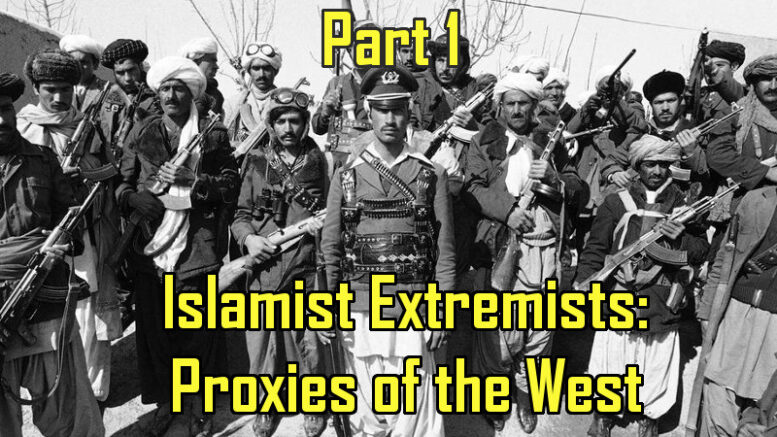
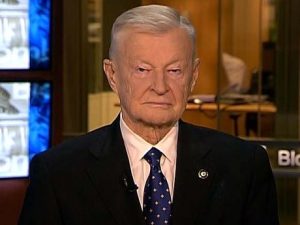
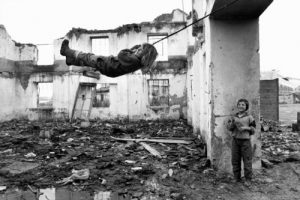
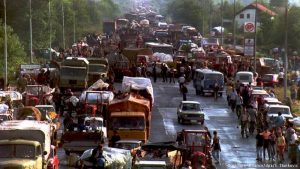



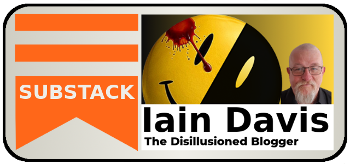


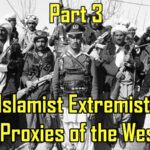
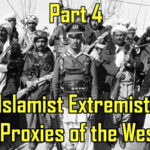
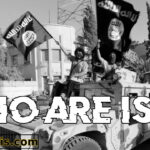
** Prior to the Soviet invasion of Afghanistan, in 1979, **
Did you mean “After the Soviet invasion . . .”?
No need to publish . . . .
Thanks Richard. The use of “prior” was deliberate. Carter authorised covert op’s in Afghanistan before the Soviet invasion. It wasn’t named “Cyclone” until after the invasion but the plan was already in place.
http://www.investigatingtheterror.com/documents/Covert_Operations_Documents.htm#cyclone